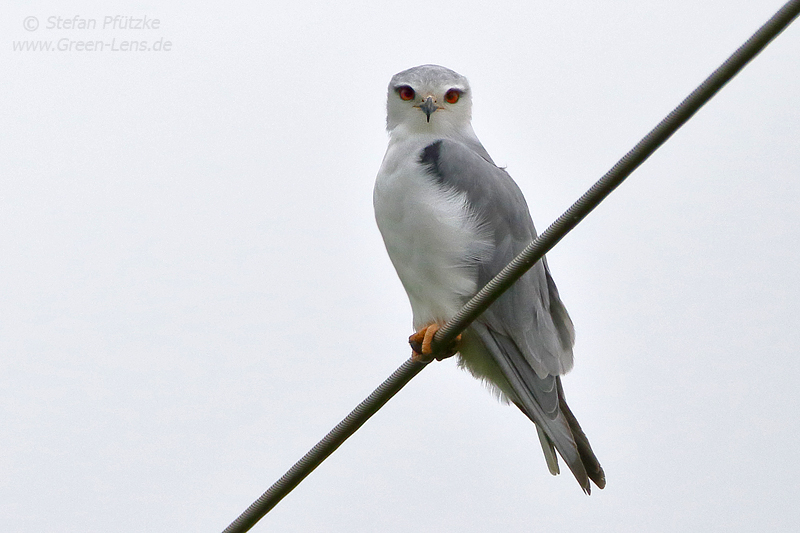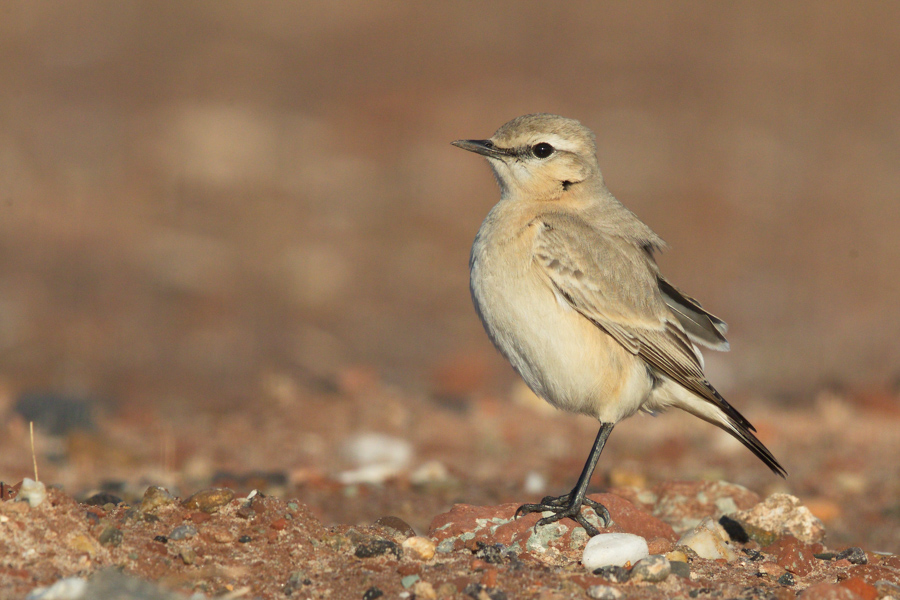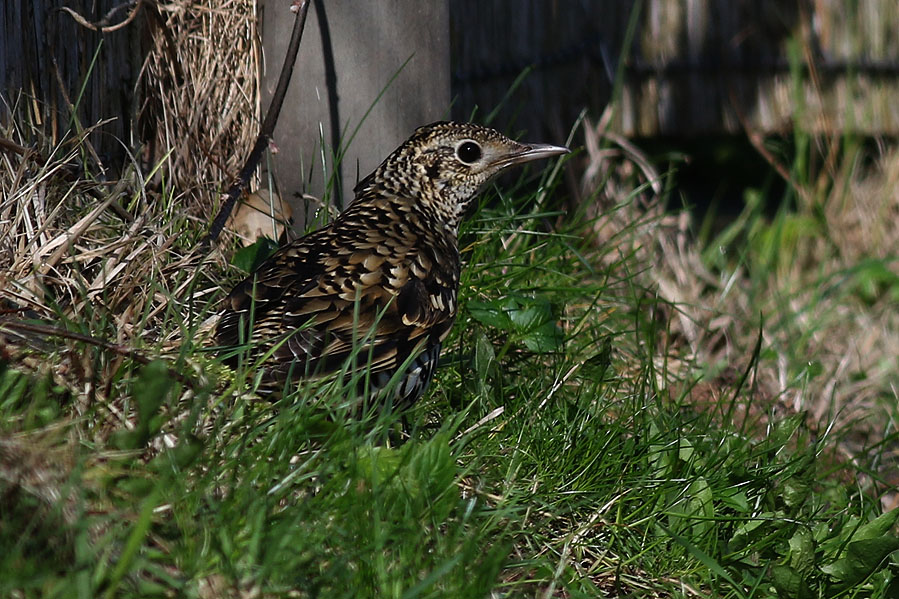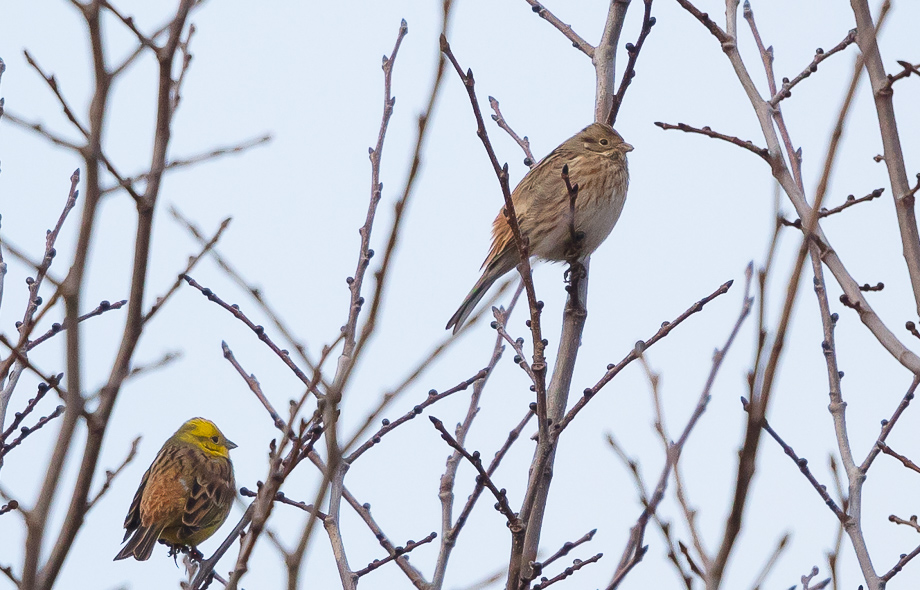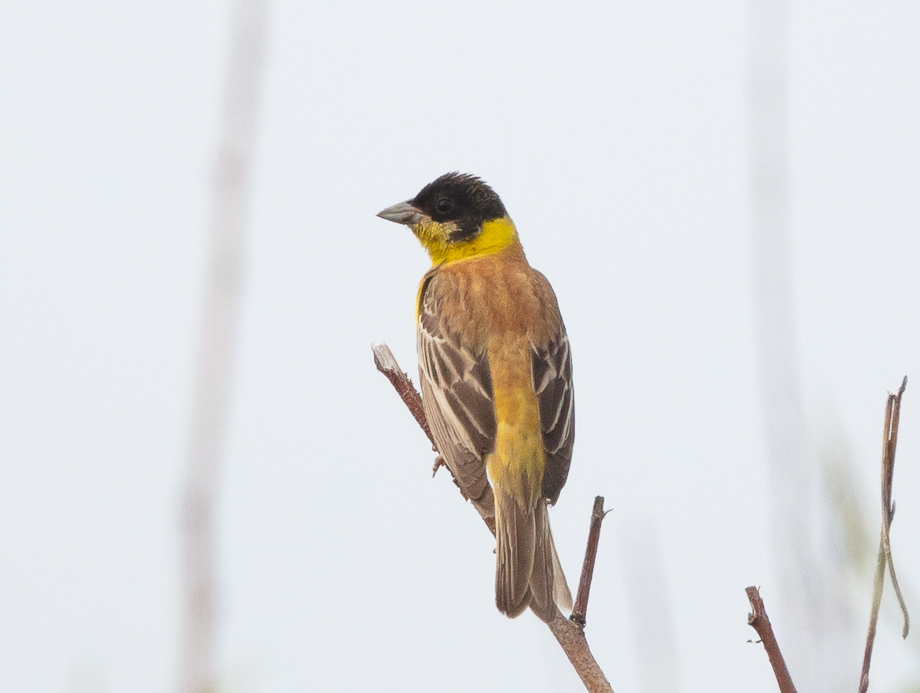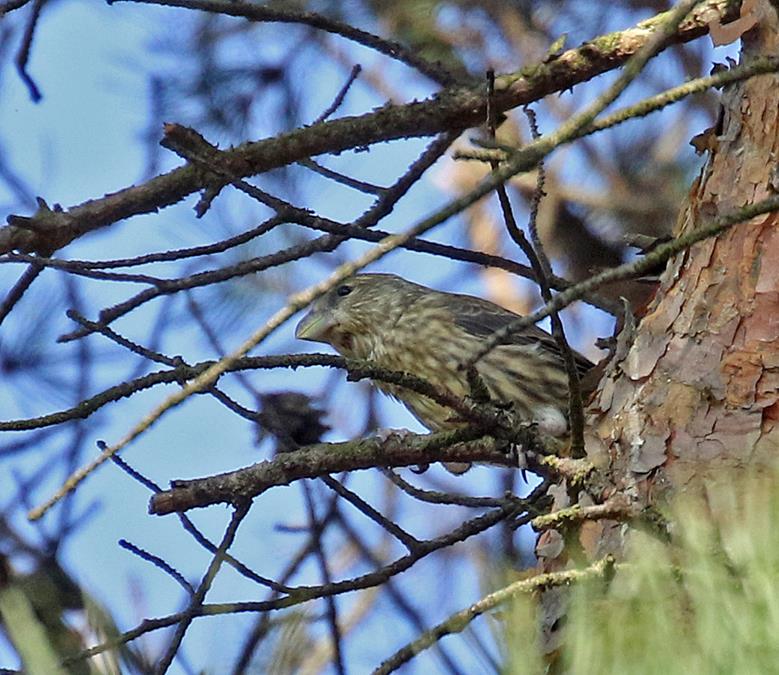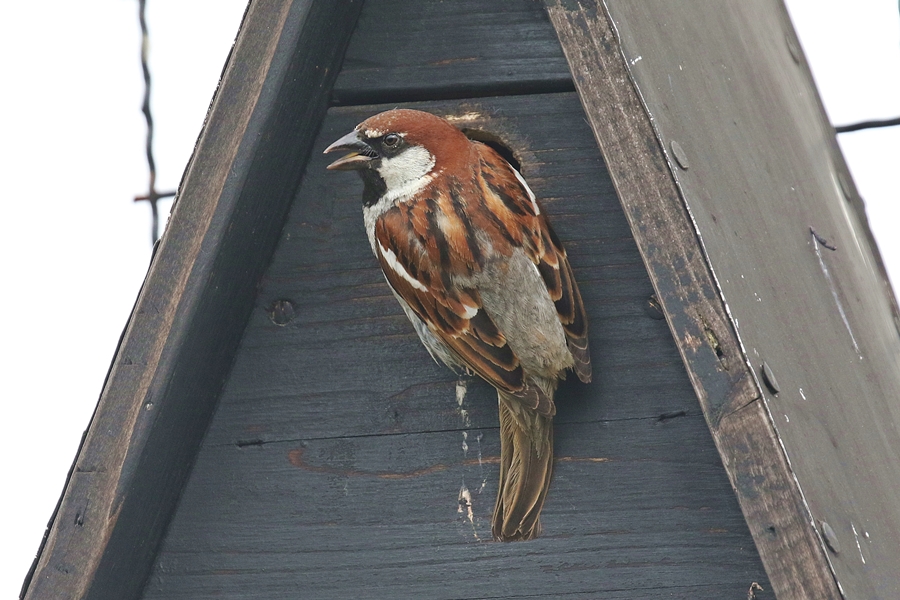or How a newbie shakes up the german birding world
Anyone who is even remotely invested within the birding community
has heard about it, many of us have at least thought about it or maybe even done
some half-hearted calculations in our heads, but only few have ever made a real
attempt of doing a Big Year! Setting
out, trying to see and hear as many bird species as possible in one calendar
year; Travelling through the whole country to get even the remotest breeders; Leaving
the house at unreasonable times to find even the most difficult species; and
twitching those vagrants that nobody really expected to turn up.
 |
'The Big Year', a
must-see for birders, |
There have been countless attempts all over the world, hundreds of
blogs have been written, dozens of books published, there’s even a Hollywood
movie starring Jack Black, Steve Martin and Owen Wilson called “The Big Year”, beloved
by the birding community. Almost yearly records are broken somewhere and it has
become one of my passions to follow those who are trying their luck during a
mission to surpass that magic number someone had set years before. Many do
county Big Years, some do country or continental Big Years, and there have even
been a handful of worldwide Big Years. Some carefully plan the whole year in
advance, taking sabbaticals from their job and raiding their bank accounts,
while others “accidentally” tally up a good number of vagrants and then
spontaneously plunge into the adventure. Each Big Year is different, influenced
by weather conditions, direct competition or boundary changes, but ultimately
depending on the bird species that turn up or stay absent during the year.
The motherlands of Big Years are arguably the USA and Canada,
which compromise the so-called ABA region. Competition here is very high and
the competitors can be sure to be followed by an enthusiastic crowd, but the
Big Year spirit is currently reaching many other parts of the world. Germany is
one of those countries. Platforms such as the Club300 or ornitho.de have
facilitated quick twitches and birding trips to the other side of the country. The
birders of the country are now connected via WhatsApp, Facebook, etc.
Therefore, Big Years have recently become an annual thing. The current record
holder is Arne Torkler, who managed to find 337 species in 2016(?). Even though
great effort went into these last Big Years, nobody went the whole length for a
long-staying, maybe unbeatable record.
This year, however, sees a new contender for the German record. 30-years
old Eike Schulze is currently doing a Big Year. He has so far recorded 317
species, with many easy winter species still missing from his list and he wants
to go the full length for a new German highscore. Here’s a little interview with him.
 |
Eike at the edge of the Karwendel pit, where
he added Rock Ptarmigan to his yearlist |
Hello
Eike, it wasn't until April that I noticed via Facebook you might be doing a
Big Year. Did you plan on doing this Big Year beforehand or did you
'accidentally' stumble into doing it?
Hi Mathieu, well if you don't plan a
Big Year I'm pretty sure you won't be successful. I decided to do a Big Year at
the end of last year. With the number of 316 species I tallied a quite good
number during 2017, especially as someone who isn't that long into birding. But
when I compared my personal year-list with the list of all species that had
been observed in Germany last year, I found out that there was a lot of
potential to reach an even higher number.
I started to think about how I could
manage to get this higher number of species. For this I wrote down a table with
all the possible birds, divided by season, part of Germany and difficulty.
I knew that it would be a tough
campaign that would cost much money and time....
I'm a teacher at a secondary school in
Germany and luckily I knew that I'd have quite much time during the first half
of the year because of only few class hours.
What are
your ambitions? Will you surpass the old record?
At the beginning of the year I thought
it would suffice to win this year's campaign but after my first larger trips
and really successful twitches I realized that I could reach a high number for
this year. First of all, my ambition is to break the old record of 337 species.
But even if I surpass the old record, I won't stop, as I'm hoping to get close
to the magical number of 350.
I gave myself two conditions: No day
off from work and the amount of the heard-only species, must be lower than 5 %.
Apart from the holidays you can't legally take a day off as a teacher, you only
have the weekends and the time after work.
You just said, that
you started only recently with birding. Would you mind telling us more about
your birding background?
My father was the head of the local
NABU-group in our town so from my early days on I was in contact with nature.
Until I was 13 my parents and I went on holidays with our caravan and we often spent
the time birdwatching. But my parents are no experts, I’d rather call them friends
of nature, thus my knowledge about birds wasn't that good at the time.
Unfortunately, birdwatching wasn't something my friends at school thought
of as interesting so that I lost my interest until after I finished school.
During my studies and with the start of ornitho.de I began to be interested in
birdwatching again and went to my local spot - lake Dümmer - nearly every
weekend. I had still never twitched until then.
However, I started to look through the sightings on ornitho.de regularly
now, including the rare birds. I remember one day, when I laid in my bed in
Osnabrück - where I studied - and read about a Wilson's Phalarope in Schleswig-Holstein.
I was so thrilled to see this beautiful bird that I decided to drive to
Schleswig-Holstein over night to be there at first light. This was my first
twitch in 2014.
Luckily in 2015 people from my area started a so called
"Ornithologists gathering", where I met other people my age who regularly
go birding. They invited me to come along with them to Helgoland and this was the
beginning of me becoming a bird addict.
Tell us a
little about this past half of the year: Where did your travels take you, what was your
most remarkable observation and has anything so far not worked out the way you
hoped?
 |
| One of Eike's hightlights, a Capercaillie during courtship in Bavaria |
The year definitely didn’t start as hoped. I needed five tries and over
2.000 km to see a Red-breasted Goose. I went to southern Germany twice to dip
on the normally quite easy and long staying Pine Bunting. I tried three times for
the American Scoter in the Baltic Sea, but didn't see the bird either.
Then, it finally got better when I found a 3rd cycle Iceland Gull in my
home area and an Arctic Redpoll in eastern Germany (both my firsts in Germany).
Also, I made a fantastic trip to Sylt on a Monday after work. It was a
risky trip because upon arrival I only had two hours of daylight left, but in
the end I was successful. Not only did I see the Black-browed Albatross for the
first time, but there was also a Desert Wheatear present.
I also did some larger trips: I went to eastern Germany, to the Alps and
to Helgoland three times each and did a couple of trips to the North and Baltic
Sea. Most of these trips were really nice and I managed to find most of the
birds I wanted to sea.
One of the best moments was definitely the sighting of a Hazel Grouse in
Bavaria. The bird would first sing, then fly behind me and finally it landed on
the snow-covered path in front of me, so that I was able to take some nice
pictures. Other big moments were an encounter with an aggressive Capercaillie
or hearing a Rock Partridge in the Alps. Further nice observations were for
example the Cretzschmar's Bunting in Geeste or the American Golden Plover in
Schleswig Holstein.
 |
This Cetti's Warbler has been present for several months now,
near the Dutch border |
And what
about the next half of the year? Do you have a special approach to succeed?
Well, first of all I'm on holiday for the next three weeks on the
Shetland Islands. I know you can't go on holiday in a Big Year, but I don't
care :D. The rest of the year will be very tough. I will have much to do for my
job and I'm playing volleyball in a team where the matches start in September.
Nonetheless, I'm going to use all the time I can get to go birding. Of course
I'm hoping to find some missing species by myself but I'm also sure that I’ll
need to do loads of twitching. I have so far observed nearly every German
breeding bird, except Ural Owl and Rock Thrush. I'm really hoping to find a
Rock Thrush, as it's my favourite bird in Germany and I've never seen one so
far. I'll try to find these two birds first and then I’ll focus on the coastal
areas of Germany.
I'm hoping for some scarce waders in the late summer, for a Red-footed Falcon
and a White-winged Tern, which I both missed during spring. For autumn, I
really look forward to go seawatching. I think it’s going to be crucial, how
successful I’ll be with Petrels, Shearwaters and Skuas.
And of course I'm going to visit Helgoland a couple of times. I think I’ll
spend all the weekends without volleyball games at the coast or on Helgoland.
What rarity
are you hoping for the most to turn up in the next 6 months?
I'm really hoping for a constant and long
east wind situation so that maybe some Siberian birds turn up on Helgoland. In
that case the species doesn't really matter, but I'm secretly hoping for an
Arctic Warbler. Furthermore I'll do my best to find some Shearwaters, e. g. a
Manx or even better.
What do
your friends and family think about this Big Year?
When you talk about family and friends I have to say that I'll be happy
when this year comes to an end. Until now I have seen my circle of friends from
home only four (!) times. Also I haven't spent much time with my family. It's
simply not possible to do a proper Big Year and maintain relationships the way
you would do it during any other year. Of course, I knew this and I warned my
friends and family in advance about what I'd be going to do and they are fine
with that.
Another aspect why I'll be happy when this year is over are the costs: I
spend about 50-60 % of my salary for this campaign every month. I need to pay
hotels, ferries, expensive food on the motorways and of course my car and the
fuel. Until now I already drove 51.000 km and I estimate that 40.000+ km were
for birdwatching.
Talking about my friends from the birdwatching scene, it's completely
the other way around. Without them I wouldn't be able to succeed and - this is just
as important - it wouldn't be as entertaining. As I said in the beginning I'm
quite new to twitching and birding, so sometimes I need some help identifying a
bird. This is why I try to take pictures or make sound recordings of every
species I observe or I try to go for a bird with someone else, who's then able
to confirm it.
I'm really positive and excited about the next half of the year. I’m
currently at 317 species - this is already one more than I had last year. I'm
sure that I'll observe the missing 21 species to set the new record.
How can we
follow the success of your Big Year?
You can follow me on Facebook or Instagram under Eike Allez or
#bigyeargermany
Thank you
very much for this interview and best of luck during the rest of the year, Eike!





